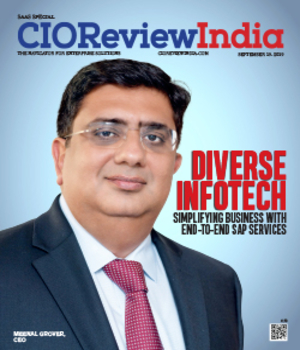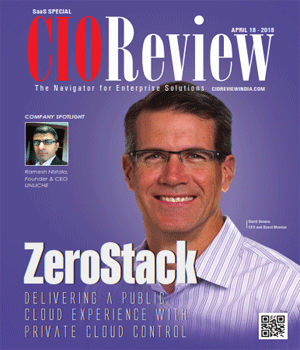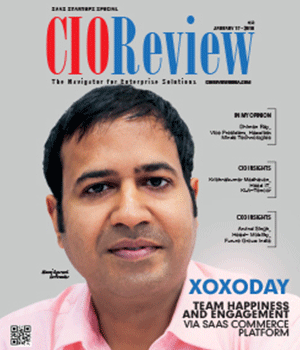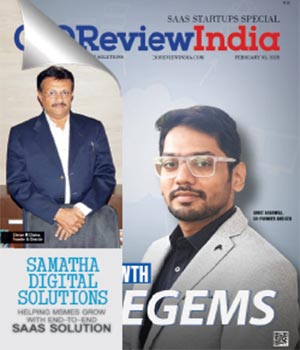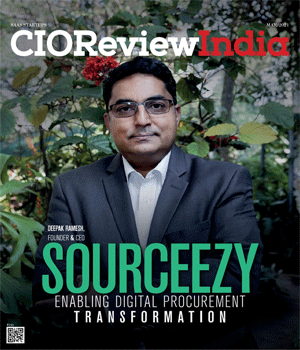
What makes SaaS the Torchbearer of Agility
Janifha Evangeline | Wednesday, 07 April 2021, 01:34 IST

Software as a service - also popularly known as SaaS, is a software distribution model that offers a great deal of agility and cost-effectiveness for organizations, which makes it an incredibly reliable option for multiple business models and industries. Some of the major reasons for SaaS being so popular among businesses are its simplicity, user accessibility, security, and widespread connectivity. According to a recent report by Mckinsey & Company, technology industry analysts predict that the market for SaaS products would reach USD 200 billion by 2024.
As one of the three main categories of cloud computing, such as IaaS and PaaS, SaaS applications are largely used by a range of IT professionals, business users, and personal users and SaaS products range from personal entertainment such as Netflix to advanced IT tools.
The top two trends and innovations in SaaS are:
The merger of AI and cloud computing
Artificial Intelligence – a central tenet for the disruptive changes of the 4th industrial revolution has brought a tremendous change in the technology industry with the merging of AI and cloud computing. Other than enabling the learning and growth capacity, the merger of AI and cloud computing has built a robust network that not only has the capability to store but also process and analyze humungous amounts of data. Therefore, this merger led technology by providing organizations more flexibility and agility to host data and applications in the cloud has helped them become more insight-driven, strategic, and efficient.
Intending to derive more benefits from the AI and ML algorithms, organizations today are hosting these powerful networks on the cloud. AI platforms in the cloud offer numerous benefits such as managed services for hassle-free development, faster time to production with code-based and no-code tools as well as robust governance with interpretable models.
However, one of the major advantages of deploying AI technology in a meaningful way has become cost-efficient and this has become possible mainly through the integration of AI in cloud computing. Not just that, Artificial Intelligence has also automated numerous core processors in cloud computing, enabling streamlining of workloads.
“The intersection of AI and cloud has brought the opportunity to make enterprises AI-fuelled in multiple ways. It has democratized pre-built API-based AI algorithms that can help manage data such as image, video, voice, etc. in a much superior way to building from the ground up which takes both time and needs large samples of data. It makes easy compute and storage scalability to meet the intensive needs of advanced AI algorithms that solve complex issues on-demand,” said Prashanth Kaddi, Partner, Deloitte India.
A classic example of the confluence of AI and the cloud
The motor insurance break-in application of a general insurance enterprise is a perfect example of the convergence of AI leveraging the cloud. Intending to make computing faster and more efficient, a general insurance company in India, which is a joint venture between the country’s second-largest bank and a financial holding company based in Toronto, developed its prime AI solution on the cloud.
While the solution leverages computer vision algorithms which are deep learning neural networks, requiring intensive computer power in order to identify damages on vehicles, the GPU-based data science virtual machines on the cloud platform help in running these algorithms. The ability for creating and testing solutions rapidly on the cloud increases multi-fold, as these virtual machines are already pre-configured with the tools that a data scientist requires.
Machine Learning innovation to empower SaaS-style offerings
Owing to its abundant and cheap computation features, ML is popular in the tech industry. ML is not only one of the fastest-growing segments of the software industry but it is also a trending SaaS 2021 topic. In SaaS, ML is utilized to automate responsiveness in customer service reports and applications, such as AI-powered chat operations with live chatbots. In addition to the aforementioned merits of ML, it is also used to automate the onboarding process of SaaS. Since Machine Learning is developed/built on an autonomous operational model, the innovations will enable software and platforms that empower businesses to automate substantial chunks of internal operations besides customer service or experience alone.
It is predicted that a fresh injection of ML innovation will empower SaaS-style offerings to become self-improving, providing a level of intelligence and operational efficiency which will drive a host of industries forward. As ML keeps evolving and results as an integral part of the AI-based software-as-a-service model, a large number of platforms will evolve and emerge, helping businesses across sectors.
On a highly commercial level, the personalized content suggestions of Netflix and Waymo’s self-driving cars that calculate increasing potential risk factors of journey hold-ups over time are classic examples of Machine Learning in SaaS-type models, and moving ahead these innovations will prove to be the tip of the automation iceberg.
The Stumbling Block
What is more attractive about cloud-based solutions is that it makes it easier for software vendors to deliver innovation. SaaS brings several benefits and relieves the organization of the burden of the upgrades, and removes any excuse for not moving forward. Furthermore, various SaaS solutions are offered by many vendors, not all of them offer the same speed and quality of innovation.
Enterprises of the small, medium and large sizes are thriving in SaaS ecosystems with many OEMs pitching for SaaS-based applications such as ERP, HRMS, CRM, etc. Whether it is about managing people, managing processes or the technology there has never been a silent revolution to ensure strategic business growth without compromising innovation, scalability, or cost-effectiveness.
While there are best-of-breed OEM solutions rendered by vendors which address specific needs in an organization’s overall technology journey on one hand, on the other, there is the all-in-one suite of solutions provided by a single provider to modernize any enterprise in one go.
Envisioning the future
Imagine a SaaS ecosystem in which various types of best-in-breed software are implemented to handle business areas in various teams. While there are niche solutions, the complete workload of validating upgrades for every product can be a nightmare, however, the frequency and complexity may differ. But it is better for an organization to invest in an all-in-one solution, as the vendor may help you excel when it comes to innovating at the speed of your competitors.
With SaaS partnerships, organizations can focus on growing their core strengths rather than of getting decelerating by developing software from scratch. The only question is whether you must invest in an all-in-one solution suite or an expansive stack of best-of-breed solutions.
However, the answer to this question depends on the level of modernization in your SaaS ecosystem and the recommendation/suggestion would be to follow and maintain a balanced approach. In case you are looking for an all-in-one solution, ensure it allows enough flexibility in your ecosystem for continuous improvements through customization and extension or if you want to leverage best-in-breed niche solutions, ensure that they are ready to deliver a major impact on your business.
CIO Viewpoint
2020 To Be A Trendsetting Year For The SaaS...
By Abhilash Garg, VP IT (SaaS), DMI Financial Private Limited
Baseline It Transformation In Digital Era
By Shibin Chulliparambil, Head of IT, Mafatlal Industries Limited
Scenarios And Challenges In Personal Data...
By Ajay Kumar, Group Head IT, Polyplex
CXO Insights
The Rise Of Developer-LED Innovation And...
By Subrato Bandhu, Regional Vice President, OutSystems
Four Questions To Answer Before Considering A...
By Shrikant Navelkar, Director, Clover Infotech
3 Focus Areas For An Autonomous Driving Revolution



